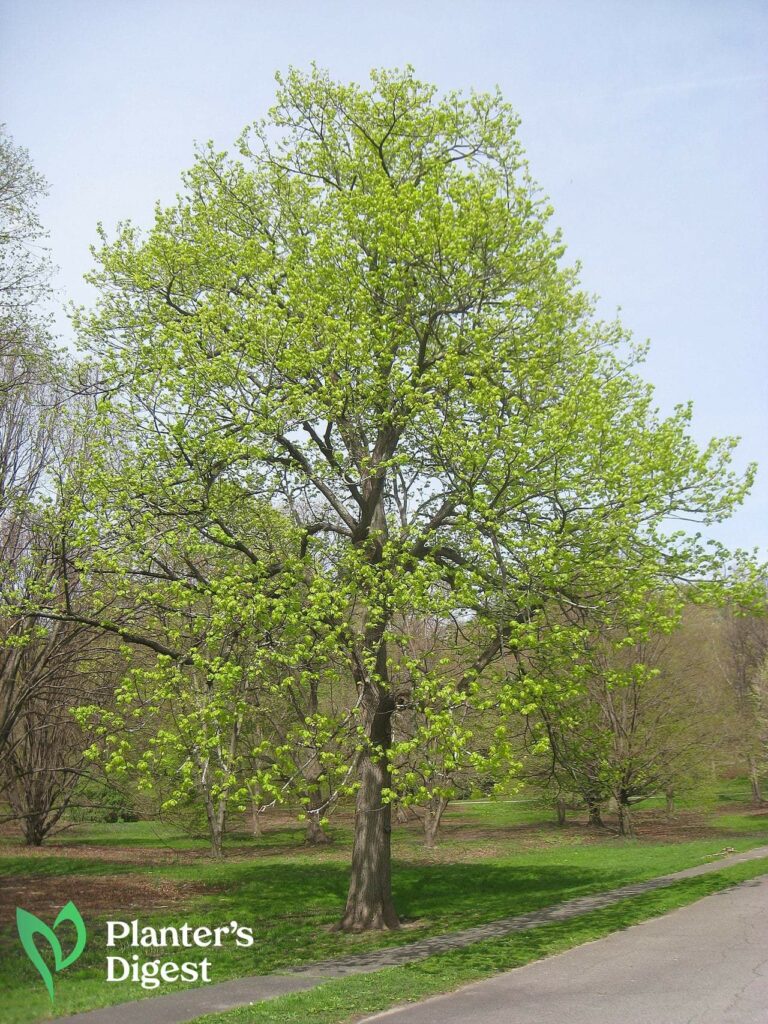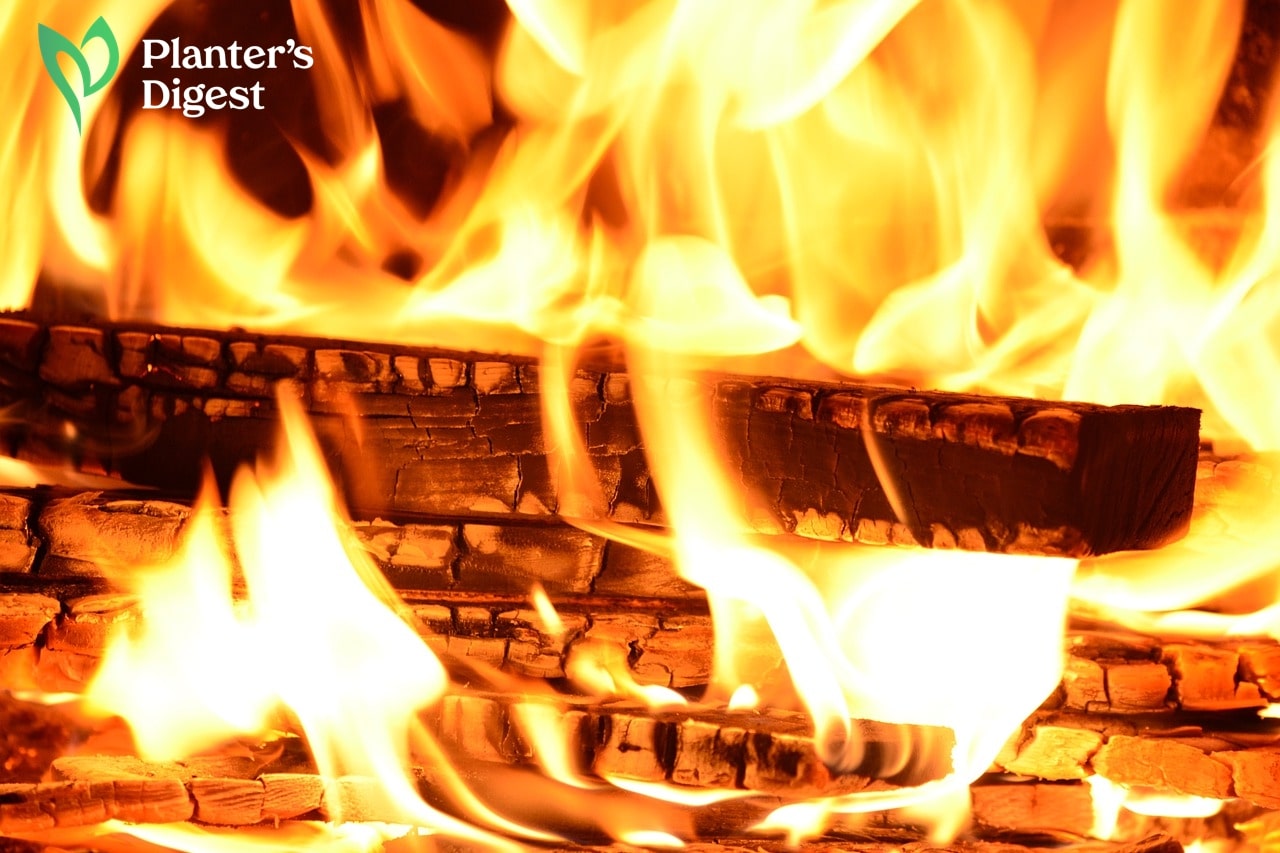
Basswood is commonly used in making matches, carving and woodworking projects, but one of its lesser-known uses is as firewood.
In this article, we’ll explore the benefits of using basswood firewood, learn about its burning characteristics and discover how you can use it in your home.
Is basswood a good firewood?
Basswood is excellent kindling firewood, especially for reigniting drying fire. However, it has a low density and produces a low BTU of 15.8 million per cord, making it a fast-burning wood and an ineffective heating source.
Its low density makes basswood a good kindling wood since it can catch fire quickly and can be used to help spread fire to other hardwoods. It can also reignite the morning fire on a hot bed of coals.
Since it is light and burns quickly, you can also use basswood to stoke up a smoldering fire and in campfires.
As a soft hardwood, basswood is very lightweight and less dense. This means that the heat it produces is only felt all at once, which is helpful for kindling but not for long burning periods.
For instance, if you try to burn it in a fireplace, it will not generate much heat and will burn out quickly.
Here’s an overview of the physical and fire-burning properties of basswood firewood.
| Tree Name | Basswood |
| Scientific Name | Tilia americana |
| Common Name | • American Basswood • American Linden |
| Family | Malvaceae |
| Height | 70 to 80 feet |
| Life Span | 200 years |
| Type of Wood | Hardwood |
| Dry Weight (lbs per cord) | 2,298 |
| Green Weight (lbs per cord) | 3,570 |
| Seasoning Time | 6 to 8 months |
| Heat Content (million BTUs per cord) | 15.8 |
| Sap Content | Low |
| Splitting Difficulty | East |
| Smoke | Moderate |
| Smell | Neutral |
| Coal Production | Poor |
| Creosote Build-up | Low |
Fire Characteristics of Basswood Wood
Basswood as firewood is easy to split, has low heat output and creosote build-up, and produces moderate smoke and poor coals.
1. Easy to Split
Basswood is considered a soft hardwood. Because of this, it is one of the easiest firewood to split, even if you try to break it while it’s still green.
The ease in splitting basswood is primarily thanks to its straight grains and little to no knot formation.
2. Low Sap Content
Basswood has very low sap content, so splitting it won’t be messy, unlike sugar maple or pine firewood. Additionally, low sap content will not create pops and sparks when burning basswood, making it a safe choice for indoor fire-burning activities.
4. Low Heat Output
Basswood produces a low heat output of 15.8 million BTUs per cord. Together with poor coal production, it’s a fast-burning and ineffective heating source.
Although it’s a hardwood, basswood generates a lower BTU than hardwoods like oak or maple and softwoods like pine or poplar. Check out the table below to compare basswood with other firewood heat outputs.
| Firewood | Heat Output (million BTUs per cord) |
| Osage Orange | 32.9 |
| Bur Oak | 26.2 |
| Mulberry | 25.8 |
| Juniper | 21.8 |
| Alder | 17.5 |
| Basswood | 15.8 |
| Horse Chestnut | 13.8 |
| Eastern Red Cedar | 13.0 |
5. Low Creosote Build-Up
Burning basswood will leave little to no creosote in your chimney because of its low sap content and low smoke production.
With fewer of these, basswood has less chance of creating creosote and depositing the black tar-like byproduct in your chimney. This makes it a relatively safe choice indoors since it will not add extremely flammable creosote to your flues.
6. Moderate Amount of Smoke
Basswood firewood produces a fair amount of smoke but less smoke than you would get from burning sugar maple or cedar.
Still, if you don’t mix it with other high-quality firewood, you’ll end up with a smoky room and irritated eyes.
To further lessen smoke output, use only well-seasoned firewood so there will be the least moisture the wood will evaporate as it burns.
7. Poor Coal Production
Basswood produces low amounts coals and poor quality at that, making it a fast-burning firewood. It also does not have high sap content to make it burn aggressively.
A moderate number of high-quality coals helps sustain fire through the night. Most hardwoods, like black locust and oak, create high-quality coals, but that’s not the case for basswood firewood.
Advantages and Disadvantages of Using Basswood Firewood
| Advantages | Disadvantages |
| Low creosote build-up | Low heat output |
| Low sap content | Poor coal production |
| Easy to split | Moderate smoke output |
| Great kindling wood | Prone to rotting |
Basswood is the ultimate go-to for those looking for kindling wood. It can quickly start a brand-new fire and even re-ignite an old one.
Because of its low sap content, burning basswood does not leave a lot of creosote in your chimney or produce pops and sparks while burning.
It’s great for seasoning since it’s easy to split because of its straight grains, little knots, and short seasoning time of 6 to 8 months.
Unfortunately, basswood has a low heat output and poor coal production, making it a fast-burning wood and an inefficient heating source.
It also emits a moderate amount of smoke and is susceptible to rotting, so it should be used within one year of being cut.
How does basswood compare with other firewood?
Basswood is generally inferior to most hardwoods and even softwoods because of its low heat output and poor fire-burning properties. Its heat output is even lower than poplar and cedar firewood.
On the brighter side, basswood makes a better kindling wood and catches fire faster than some pine wood varieties.
How long should you season basswood wood?
Due to its low density, basswood takes only 6 to 8 months to entirely season. It’s best to cut the wood during late spring or early summer to have enough time to dry before winter.
As the wood seasons, it does not warp or disfigure, so it’s easier to store. However, basswood is prone to rotting, so it should be used within a year of being harvested.
FAQs on Basswood Firewood
Ash and basswood differ in leaf appearance, where ash leaves are compound while basswood leaves are heart-shaped.
When properly seasoned, basswood turns light brown and feels dry when touched.
Basswood firewood is best used for kindling brand-new indoor or outdoor fires. It also effectively reigns overnight fire on a hot bed of coals.
Basswood is a hardwood tree with a Janka hardness rating of 1,824 N. It is a soft, lightweight hardwood widely used in carving and woodworking projects.




